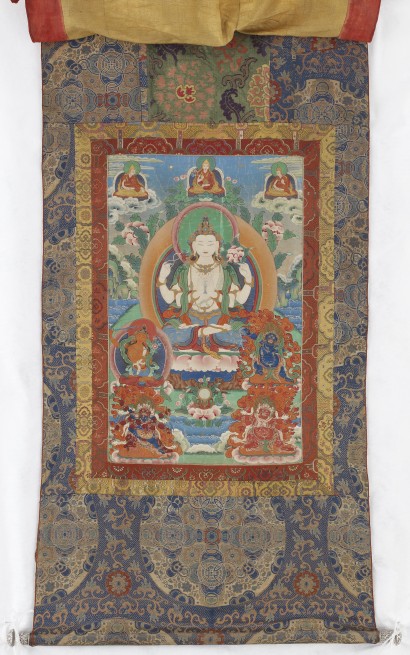Tibet, 14th–15th century; pigment on cloth; 22 1/4 x 18 1/2 in.; The Rubin Museum of Art, New York, C2002.8.1.
This later thangka shows a stylistic evolution in the presentation of Shadakshari Lokeshvara, but essential iconographic features remain the same: frontal figure in lotus posture, dressed in the garb of an Indian prince, with mala and lotus attributes, and frontal hands in anjali mudra. As with the earlier painting, this 19th-century work aids the practitioner in visualization and contemplation. To increase its splendor, the thangka is mounted on sumptuous pieces of Chinese silk brocade. The elaborate presentation pays homage to the bodhisattva.





